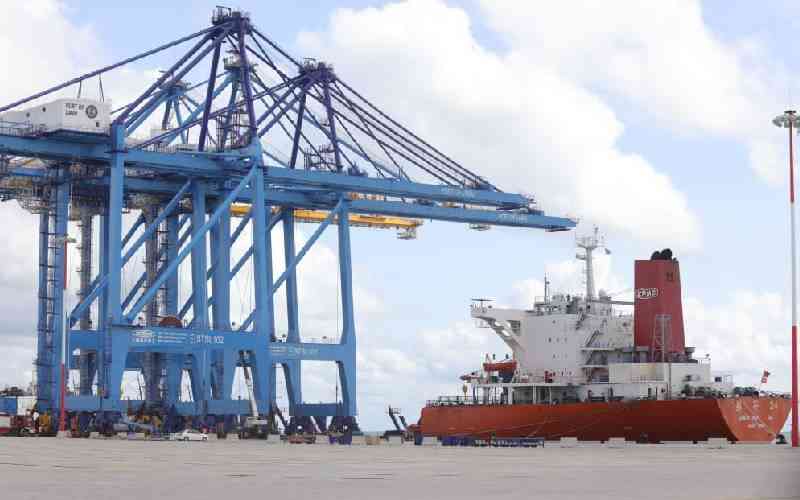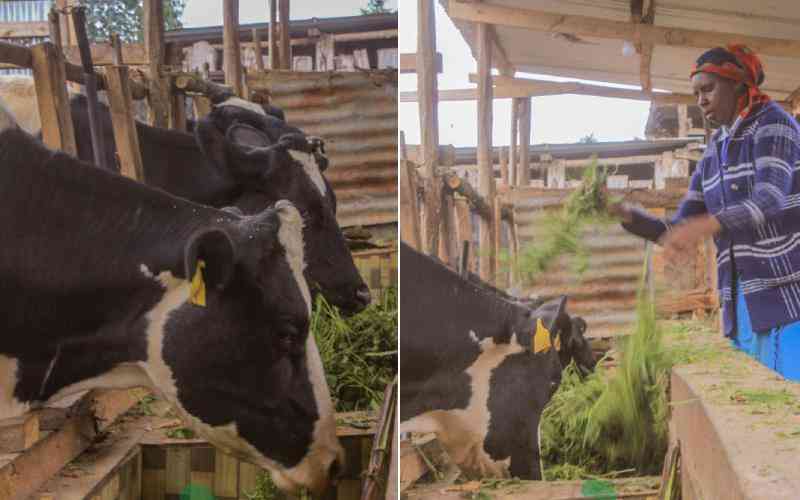The most predictable thing in Kenya nowadays, other than the fact that we will have elections in 2017, is that next year, we will still be grappling with issues of food insecurity.
You could say the more things change, the more they remain the same.
I have witnessed since independence the cycle of plenty being followed almost immediately by another round of debilitating drought and famine.
Coming from a pastoralist background, where life rotates around animals and pasture, I heard the Devolution Cabinet Secretary make yet another grim announcement about those at risk of starving.
That 1.6 million Kenyans risk starvation makes nonsense of all the blueprints on poverty eradication, wealth creation and the ambitious Vision 2030 blueprint.
The measures she pronounced don’t really address the problem, they simply address the symptoms.
In Maslow’s hierarchy of needs, food is at the basic level. In fact, that is where we should be starting.
We can have aspirations, but not on an empty stomach. How then do we address the ignominy of a society that cannot feed itself?
I may sound a little politically incorrect but, in truth, Kenya is made up of two halves: one that is characterised by plenty to eat, with the surplus rotting away in the farms and granaries bursting at the seams, and the other half that survives on the bare minimum; a hand-to-mouth sort of a thing.
There lies the rub.
How is it that those who have extra food cannot come to the aid of those who lack?
Economists talk about supply and demand. In our case, the food doesn’t get to those who need it.
In other words, for as long as food continues to rot away in farms, the incentive to produce more is not there and hence the cycle (God forbid) will repeat again next year.
So to expect that the problem will go away is like expecting the sun not to rise tomorrow.
What am I saying? We, nay, the Government has failed to make use of what we have to work for us. Scientists will talk about manipulating nature to man’s advantage. We have let nature manipulate us for so long. We fail to plan for the hard times ahead. We are always caught hands down.
Stay informed. Subscribe to our newsletter
The default mode of beseeching donors for food is not what a country that anticipates a middle- income status in 15 years wants for a poster picture.
Some of the basic things that we ought to do include harvesting the millions of gallons of rain water that sweeps into the ocean every season.
It is easy to underestimate what the national government can do to level out this inequality in supply and demand.
It is a low-hanging fruit and State agencies like the National Cereals and Produce Board, in conjunction with the county governments could establish subsidiaries in these areas as a first step. That would take care of the grain scarcity and help stabilise the prohibitive prices.
It is encouraging that in places like Isiolo and other northern Kenya locations, the county governments are making do with what little they have to cushion the locals against the vagaries of bad weather.
Those efforts are, compared with what the national government can do, a drop in the ocean.
Because the region predominantly engages in livestock keeping, the efforts needed include providing water bowsers, destocking and restocking as suits the seasons.
This has not entirely been successful, but we are trying.
One of the challenges has been trying to change the culture of the people.
Livestock keeping is a way of life for many in the area and a move that seems to go against the grain will no doubt create discomfort, but since this is being done by the county government, the people have a sense of ownership and appreciate the goodwill.
Once the goodwill is established, there is smooth-sailing. This will also help diversify economic activities.
But that is only a small way. About 75 per cent of Kenya’s land mass is arid and semi-arid.
This land is not only arable, but has rich volcanic soils that are good for large-scale production of foods and fodder for animals.
In the wider scheme, as Kenya’s middle class expands, it would be foolhardy not to expect food riots because the desire for meat, milk and fruits will soon peak.
This is food for thought for policy makers; to think about making NEP a food basket for the country.
The 2009 Economic Stimulus Programme, which was the brainchild of the then Finance minister and now President Uhuru Kenyatta, seems to have lost steam.
Yet if that were followed through, it would have had a great impact at the grassroots level.
The revival of the irrigation schemes and managing range land fodder could go a long way in alleviating the perennial food crises.
Lastly, but not least, the opportunity provided by the Lappset project is immense.
It has kicked off in earnest and all indications are that the Northern Frontier is set for a huge transformation. But as I said before, getting the basics right is important to get food on the table. It is what counts most of the time.
 The Standard Group Plc is a
multi-media organization with investments in media platforms spanning newspaper
print operations, television, radio broadcasting, digital and online services. The
Standard Group is recognized as a leading multi-media house in Kenya with a key
influence in matters of national and international interest.
The Standard Group Plc is a
multi-media organization with investments in media platforms spanning newspaper
print operations, television, radio broadcasting, digital and online services. The
Standard Group is recognized as a leading multi-media house in Kenya with a key
influence in matters of national and international interest.
 The Standard Group Plc is a
multi-media organization with investments in media platforms spanning newspaper
print operations, television, radio broadcasting, digital and online services. The
Standard Group is recognized as a leading multi-media house in Kenya with a key
influence in matters of national and international interest.
The Standard Group Plc is a
multi-media organization with investments in media platforms spanning newspaper
print operations, television, radio broadcasting, digital and online services. The
Standard Group is recognized as a leading multi-media house in Kenya with a key
influence in matters of national and international interest.









